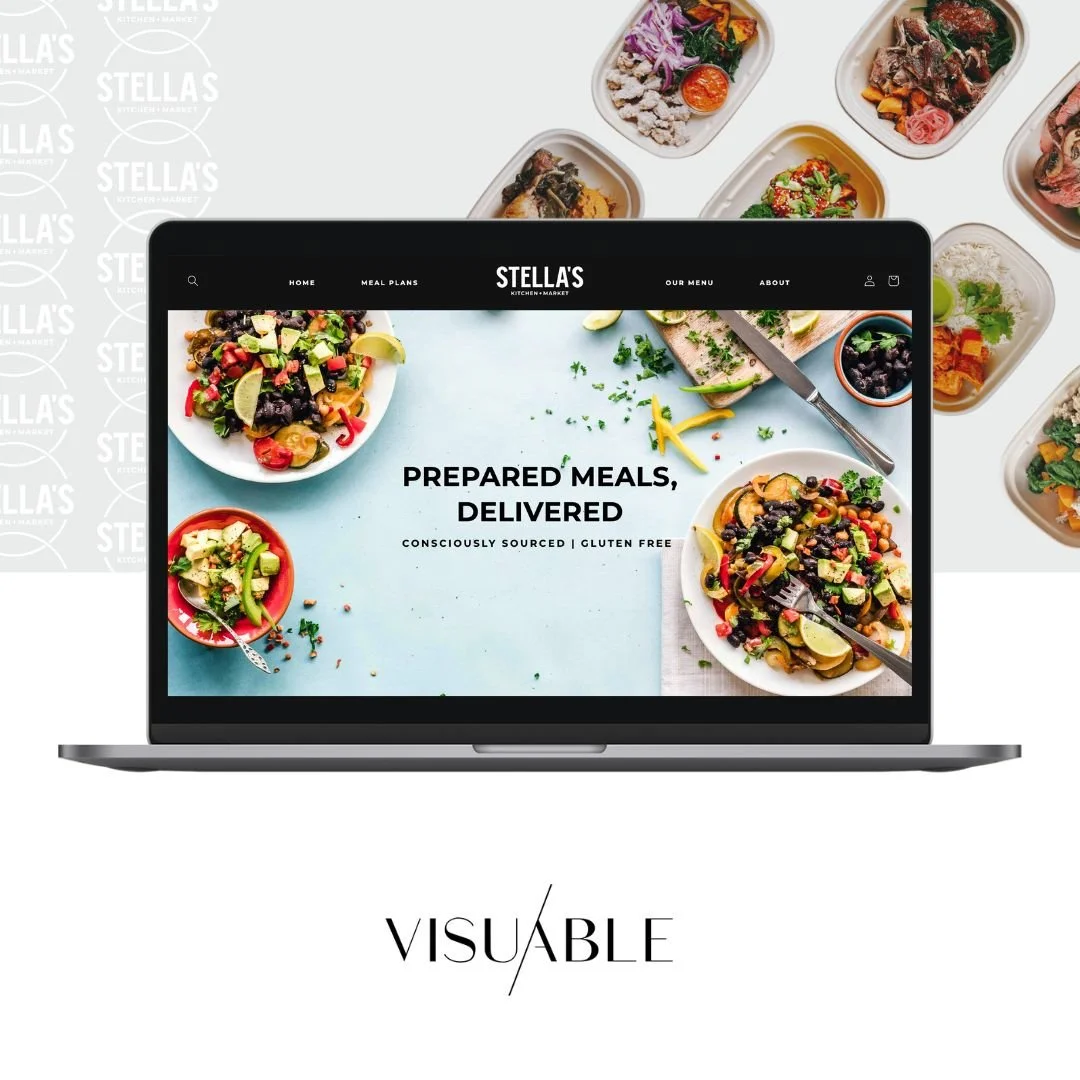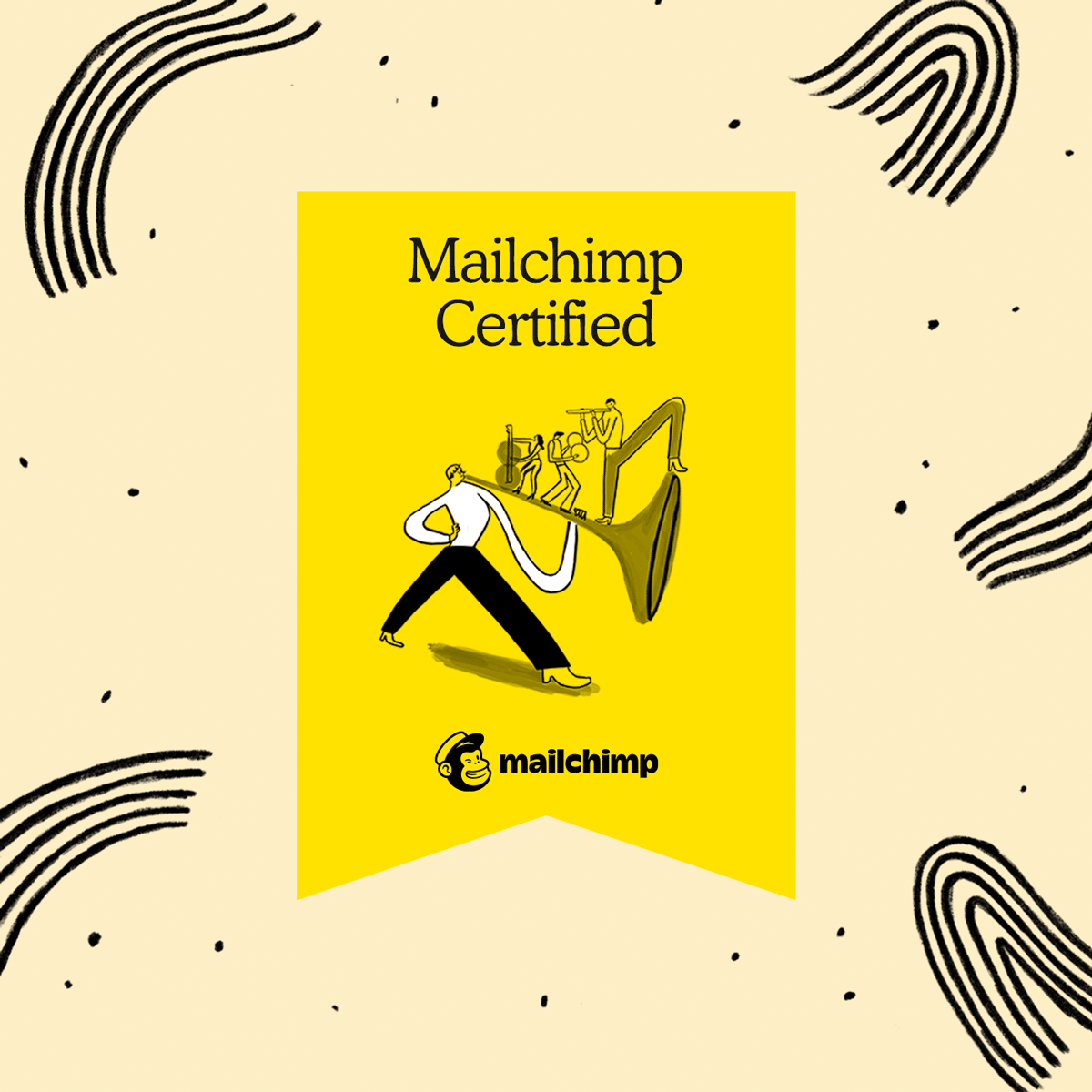Ecommerce Marketing Strategies for Shopify Stores: How to Grow and Scale in 2025
Disclosure: This post contains affiliate links. If you click through and make a purchase, we may earn a commission at no additional cost to you. We only recommend products we use and love.
If you're running a Shopify store in 2025, you're operating in an ecommerce landscape that’s faster, smarter, and more competitive than ever before. A stunning website is no longer enough, it’s just the foundation. To truly thrive, you need ecommerce marketing strategies for Shopify stores in 2025 that are designed to connect with your audience, convert visitors into loyal customers, and scale your business sustainably.
Whether you're just launching your store or looking to optimise and grow, the right marketing approach can unlock higher visibility, consistent traffic, and long-term revenue. In this guide, we'll explore the most effective tactics to elevate your brand, boost your sales, and stand out, even in a saturated market. We'll also explain why taking a full-funnel approach is essential for success on Shopify.
If you're considering starting or optimizing your online store, Shopify offers a robust platform to help you navigate this dynamic landscape.
Let’s begin by looking at why Shopify remains the platform of choice for ambitious ecommerce brands.
Why Choose Shopify Over Other Ecommerce Platforms?
In 2025, choosing an ecommerce platform can feel like navigating a maze. With options like Squarespace, WooCommerce, BigCommerce, Wix, and Magento on the table, it’s easy to get overwhelmed. But one platform continues to rise above the rest for brands that want simplicity, power, and space to grow, and that’s Shopify.
Here’s why Shopify keeps winning the trust of ecommerce entrepreneurs worldwide:
Simple to Set Up, Easy to Manage
You don’t need to be a developer to build a beautiful, high-performing store on Shopify, and that’s one of its biggest strengths. Its clean dashboard, drag-and-drop theme editor, and no-code tools make it approachable for entrepreneurs who are just getting started.
That said, even though Shopify is built to be user-friendly, there’s still a learning curve, especially if you’re building a brand for the first time. Setting up apps, configuring your checkout, and connecting marketing tools can take some trial and error. Be prepared to invest a bit of time or get expert support to make the most of the platform.
Once your store is up and running, daily management is simple. You can update product listings, track inventory, fulfil orders, and manage pages all in one place, without needing to touch a single line of code.
Built-In Marketing Tools That Actually Work
Forget juggling plugins or trying to connect a dozen different apps. Shopify comes ready with everything you need to support your ecommerce marketing strategies, including:
SEO-ready structures and editable meta tags
Email integrations for staying connected with your audience
Discount codes and automated promotions
Abandoned cart recovery to recapture lost sales
Seamless connections with social channels for omnichannel selling
It’s all there from day one, so you can focus on growing your business, not managing your tools.
Explore these features firsthand with Shopify.
Scalable from Solo Startup to Global Brand
Whether you’re shipping your first product or managing thousands, Shopify grows with you. It’s flexible enough for early-stage brands and robust enough for enterprise-level operations. And when you’re ready, upgrades like Shopify Plus open doors to advanced features including international selling, automation workflows, and deeper analytics.
A Powerful Ecosystem at Your Fingertips
The Shopify App Store gives you access to thousands of tools to fine-tune your store, from upsell widgets to subscription managers and shipping solutions. You can start simple, then expand with the features you need as your business evolves.
No need to custom-code. Just plug, play, and grow.
Speed, Mobile, and Security - All Built In
Your store needs to be fast, mobile-ready, and secure. With Shopify, that’s baked in:
Blazing-fast load times
Mobile-friendly themes
Secure checkout with built-in SSL
PCI-compliant infrastructure
In a world where mobile-first experiences and trust signals matter more than ever, Shopify makes sure your store doesn’t just look great, it performs brilliantly too.
At Visuable, we’ve designed and launched custom Shopify websites for clients across a wide range of industries — from fashion to food, wellness to tech. Each project is built with strategy, speed, and scalability in mind, ensuring not only beautiful design but measurable growth. Our Shopify builds are more than digital storefronts — they’re conversion-driven brand experiences built to perform.
Why Your Shopify Store Needs a Marketing Strategy in 2025
More traffic. More sales. More repeat customers. These results don’t just happen, they’re the outcome of an intentional, well-crafted strategy.
Here’s why having a marketing plan is more essential than ever:
Consumer behaviour has evolved – People take their time before making decisions. They scroll quickly, ignore generic messaging, and make choices based on value and connection. To win their trust, your marketing has to speak directly to their needs.
The competition is heating up – Every week, thousands of new Shopify stores launch. Many are offering similar products and targeting the same audience. To stand out, you need more than a great product, you need a brand and message that sets you apart.
Marketing isn’t optional anymore – It’s the fuel behind every successful ecommerce business. From social posts and emails to SEO and paid ads, each touchpoint plays a role in getting your products seen and sold.
A clear strategy gives you direction. It connects the dots between your channels, your campaigns, and your customer journey, turning visibility into action and browsers into buyers. Whether your focus is growing organic traffic, launching email campaigns, or running smart ad funnels, your marketing plan is what transforms effort into results.
How to Build a Shopify Marketing Strategy That Converts
Creating a profitable Shopify store doesn’t start with flashy apps or trending TikToks, it starts with clarity. A strong, conversion-focused strategy makes sure every part of your store works together to guide customers forward with purpose.
Whether you’re building your marketing from scratch or fine-tuning an existing plan, this step-by-step breakdown will help you create a smarter, more scalable marketing strategy in 2025.
Understand Your Customer Journey and Conversion Funnel
Before you jump into tactics, take a step back and map out your customer journey. Where are people finding you? Where do they drop off? And what nudges them to take action?
Use tools like Google Analytics 4, Hotjar, and Shopify’s built-in analytics to understand how people move through your site, from first visit to final purchase. Layer in insights from customer feedback, surveys, and reviews to get the full picture.
Break your funnel into three key stages:
TOFU (Top-of-Funnel): Build awareness through SEO, paid ads, and social content. This is where people first discover your brand.
MOFU (Middle-of-Funnel): Nurture trust with email marketing, helpful content, social proof, and a strong brand identity.
BOFU (Bottom-of-Funnel): Drive conversions with time-limited offers, product reviews, and confidence-building features like trust badges and free shipping.
By breaking down your customer journey into TOFU, MOFU, and BOFU stages, you can identify exactly where to focus your efforts, and where potential customers might be slipping through the cracks. This strategic overview helps ensure that every piece of your marketing plan is purpose-driven, aligned with your audience’s mindset, and tailored to guide them closer to purchase. Without a clear understanding of your funnel, even the best ecommerce marketing strategies can fall flat. Map it, analyse it, and optimise it, your growth depends on it.
Crafting a Shopify Digital Marketing Plan That Works
Once you understand your funnel, it’s time to connect it to a multi-channel marketing plan. A winning strategy isn’t about being everywhere, it’s about showing up in the right places, in the right way.
Here’s what to focus on:
Search Engine Optimisation (SEO): SEO is essential for driving long-term, sustainable traffic to your Shopify store. Start by identifying high-intent, long-tail keywords that align with your niche, products, and customer search behavior — tools like Ubersuggest and Semrush are great for this. Then, optimise both your product pages and blog content to reflect those terms naturally. Blogging around relevant search queries doesn’t just improve visibility — it builds topical authority, positions your brand as a trusted resource, and helps attract the right audience organically.
Need expert help? Explore our SEO for Ecommerce packages →
From launching a fully-optimised blog to building sales-driven landing pages and Google My Business profiles, our enhancements are designed to boost your visibility and revenue:
Paid Advertising: From Google Ads and Meta to Pinterest, use paid channels to generate momentum. Tailor messaging to each stage of your funnel.
Email Marketing: Still one of the most cost-effective tools in your kit. Automate abandoned cart flows, welcome sequences, and thank-you emails. New to email? Here’s why Mailchimp is a solid starting point.
Social Media: Go where your audience already spends time. Mix video content, behind-the-scenes reels, and customer stories to build trust and visibility.
Setting SMART Goals and KPIs for Measurable Growth
If you want to grow, you need to measure. Setting SMART goals gives your marketing strategy structure and direction.
Here’s what that looks like:
Specific
Measurable
Achievable
Relevant
Time-bound
Example goals:
Increase website organic traffic by 5% in 90 days through SEO
Grow your email list by 1,000 new subscribers this quarter
Boost product page conversions to 4% using social proof and refined design
Track progress with:
Shopify Analytics for sales and conversion metrics
Google Analytics 4 for traffic sources and user behaviour
Mailchimp or Klaviyo for email campaign performance
And remember, your goals need to align with your brand’s core strategy. If your visuals, voice, and messaging aren’t aligned, even the best data won’t drive results.
Proven Shopify Marketing Strategies
Your Shopify store is more than just a digital storefront, it’s a living brand experience. To truly thrive in 2025, you’ll need more than a “post and hope” approach. Below are tried-and-tested ecommerce marketing strategies for Shopify stores in 2025, designed to boost visibility, build trust, and convert leads into loyal customers.
Search Engine Optimisation (SEO) for Product Visibility
SEO is your long-term growth ally. It’s not about stuffing in keywords, it’s about helping your store show up when customers are actively searching for what you sell.
Start with the basics: optimise your product titles, meta descriptions, headers, and URLs. Use clear language that matches how real customers search. Add descriptive image alt text and ensure internal linking helps Google (and your users) navigate your site easily.
Here’s the advantage: Shopify does a lot of the heavy lifting for you. Most Shopify themes come with structured data (schema markup) built in, which means Google can read key product details like price, availability, and reviews right out of the box. This data powers rich snippets in search results, those extra lines that show star ratings, prices, or shipping info, making your listings more appealing and clickable.
That said, if you want even more control or enhanced schema (like local business or review schema), you can always customise using apps or Shopify’s Liquid filters. Just be sure to test with Google’s Rich Results Test tool and roll out changes gradually.
Need help getting started? Our complete SEO guide breaks it all down in simple, actionable steps, no jargon, no overwhelm.
Content Marketing and Blogging for Organic Reach
Blogging isn’t just a nice-to-have, it’s a foundational strategy for building visibility, trust, and authority in 2025. While AI-generated summaries and zero-click searches are reshaping how users interact with content, thoughtful, original blogging still holds the power to connect, convert, and differentiate your brand.
To stand out in a search landscape influenced by AI Overviews, your blog content needs more than keywords, it needs depth, relevance, and value.
Here’s how to make it work:
Answer real customer questions. Build trust by addressing specific challenges, interests, or curiosities your audience has. Think in terms of solutions, not just keywords.
Go deeper than AI. AI tools summarise, but they can’t replicate personal stories, customer experiences, or hands-on insight. Create value that machines can’t mimic.
Think format-first. Structure your content with clear H2/H3 headers, bullet points, and concise definitions. This makes it easier for both your readers and AI to extract key insights. Including a FAQ section at the end of posts can help you appear in featured snippets and potentially AI summaries.
Get visual. Include product photos, behind-the-scenes shots, infographics, or even short video explainers. Visual content not only enhances the reading experience, it increases engagement and strengthens your brand's presence in image and video search results.
Stay consistent. Blog consistently, not just when you launch a new product. A regular rhythm of publishing helps build authority, improve SEO rankings, and keep your site fresh for both users and search engines.
Remember: your blog isn't just for SEO, it’s a space to express your brand’s voice, showcase your expertise, and guide your audience from curious browser to confident buyer.
Email Marketing Automation for Repeat Buyers
Email marketing continues to be one of the most powerful and cost-effective tools in your ecommerce marketing toolkit. Why? Because it allows you to connect directly with people who’ve already shown interest, whether they’ve browsed, purchased, or subscribed. You’re not competing with algorithms here. You’re speaking straight to your audience in a channel they’ve chosen to engage with.
And the numbers back it up: according to a 2024 report by Campaign Monitor, email marketing delivers an average ROI of £32 for every £1 spent — making it one of the highest-performing channels across all of digital marketing.
Here’s where automation really shines:
Welcome emails introduce your brand and build trust from the start.
Abandoned cart reminders recover lost sales with timely nudges.
Post-purchase follow-ups show appreciation and increase lifetime value.
Re-engagement campaigns bring lapsed customers back into your funnel.
Tools like Mailchimp and Klaviyo integrate seamlessly with Shopify, allowing you to set up behaviour-based automations without a developer. And with detailed analytics, you can refine your messaging, test new ideas, and ensure your emails are hitting the mark.
In a crowded digital landscape, email gives you a direct line to your customers, and with the right automation, it works while you sleep.
Social Media Marketing
Your audience isn’t just shopping, they’re scrolling. Use social media to meet them where they are. Share a mix of product showcases, user-generated content, behind-the-scenes stories, and educational posts.
Video content, especially Reels and Stories, helps boost engagement. Instagram, Pinterest, and TikTok are great for visual brands, while Facebook can help with targeted groups and retargeting efforts.
Influencer and Affiliate Partnerships
Word of mouth is timeless, and in the digital age, it’s amplified through influencers and affiliates. These partnerships help you build trust quickly, expand your reach, and drive sales through authentic, audience-first content.
Influencer marketing is especially powerful in 2025. According HubSpot's 2025 Social Media Trends Report highlights that collaborations with micro-influencers, those with 10,000 to 100,000 followers, are delivering the highest ROI, particularly among Millennial and Gen Z audiences.
The key? Work with creators who genuinely align with your brand values and already speak to your ideal customers. Their content acts as social proof, builds credibility, and puts your products in front of the right eyes in a natural, relatable way.
Affiliate marketing takes things a step further, turning loyal fans or strategic partners into revenue-generating advocates. You set the terms, and affiliates earn a commission for every sale they bring in. It’s a performance-based model, which means you only pay for results. Tools like Refersion, UpPromote, or Shopify’s built-in affiliate integrations make it easy to manage and track performance.
Together, influencers and affiliates extend your reach, add credibility, and drive measurable results, all while letting your audience do the talking.
Performance Marketing and PPC Ads
If you want quick wins and targeted reach, paid ads are your go-to. Use Google Shopping Ads to appear when people are actively searching, and Meta Ads (Facebook and Instagram) for interest-based targeting.
Each ad should be tailored to where the audience is in the funnel, from discovery to decision. Monitor performance closely, and don’t be afraid to iterate. Even a small budget can go a long way when paired with the right message and audience.
Loyalty and Referral Programs
Your best customers are often your most powerful marketers. Loyalty programmes encourage repeat purchases, while referral incentives turn happy buyers into brand advocates.
Platforms like Smile.io or LoyaltyLion integrate with Shopify and let you build point systems, rewards, and shareable referral links. It’s a win-win, customers feel appreciated, and your store sees more repeat traffic and organic growth.
Retargeting and Abandoned Cart Recovery
Most people don’t buy on their first visit, and that’s okay. What matters is how you follow up. Use retargeting ads on Facebook and Google to reconnect with visitors who browsed but didn’t buy.
Pair this with abandoned cart email sequences to bring shoppers back. A gentle reminder, a testimonial, or even a time-limited discount can make all the difference. Shopify makes this easy to automate, with no extra tools required.
Discover how Shopify can empower your ecommerce journey.
Real-World Shopify Marketing Tactics You Can Start Today
You don’t need a massive team or six-figure budget to get results. In fact, some of the most effective Shopify marketing strategies are simple, scrappy, and ready to implement right now. Whether you’re just getting started or refining what’s already working, these real-world tactics can help you drive visibility, engagement, and sales — without overwhelm.
Free and Paid Promotion Ideas That Work
Marketing your store doesn’t have to mean running expensive ad campaigns. The most impactful promotions blend organic reach with strategic, well-timed investments.
Try this mix of tactics:
Social media giveaways to grow your following and build buzz
Limited-time discount codes to create urgency
Collaborations with complementary brands to access new but aligned audiences
Google and Meta Ads to get your products in front of ready-to-buy customers
It’s all about showing up in the right place, at the right time, with the right message. Simple, strategic moves can go a long way.
How to Market Your Shopify Store With a Lean Budget
When your marketing budget is tight, every action needs to work harder. The goal isn’t to do more, it’s to focus on tactics that bring long-term value, build trust, and grow your visibility sustainably over time.
Here’s how to make the most of your resources:
SEO-optimised blog posts
Content is your silent salesperson. Creating helpful, keyword-targeted blog posts that answer real customer questions can steadily bring in organic traffic. Focus on high-intent search terms like product comparisons, how-tos, and buying guides. Not sure where to begin? Explore our Blog Page SEO Boost service to get expert support with strategy, structure, and search-ready optimisation.Email marketing automations
Email gives you a direct line to your audience, and it works while you sleep. Set up simple automations like welcome sequences, abandoned cart reminders, and post-purchase follow-ups. They build relationships, recover lost sales, and keep customers coming back.
User-generated content (UGC)
Nothing builds trust faster than seeing real people enjoying your products. Encourage your customers to share their purchases on social media, then repost their content (with permission) on your own channels and product pages. It’s a zero-cost way to add credibility and authenticity to your brand.Tap into organic social reach
Show up consistently where your audience is already hanging out. Use Instagram Stories, TikTok trends, or Pinterest boards to showcase products in action. Behind-the-scenes content, tutorials, and real-life use cases can go a long way in building community, no ad spend required.Leverage free Shopify tools and apps
Use Shopify’s built-in features and free apps to enhance your store without extra cost. Schedule product drops, use back-in-stock notifications, or install basic popups for email capture.
Even with a lean budget, you can build momentum. It’s about focusing on what works, being consistent, and staying close to what your audience actually wants to see and hear.
Tools, Apps, and Platforms to Power Up Your Store
Shopify’s app ecosystem is one of its biggest strengths. With the right tools, you can streamline processes, personalise the customer journey, and maximise conversions.
Top picks include:
Klaviyo or Mailchimp for email campaigns
ReConvert or LimeSpot for dynamic product recommendations
Smile.io for loyalty and referral programs
Hotjar to track user behaviour with heatmaps
Canva for professional visuals without the design team
Shopify Inbox for real-time customer chat
Choosing the right tools, and using them intentionally, can transform your store from a simple sales page into a fully optimised customer experience.
Recap: Your Actionable Shopify Marketing Roadmap
Growing a successful Shopify store doesn’t happen overnight, but with the right strategy and support, it’s absolutely achievable. Whether you're launching your first product or fine-tuning an established brand, here’s how to keep your momentum going.
Quick Wins for New Store Owners
When you’re just starting out, it's easy to feel overwhelmed. But you don’t have to do everything at once. Begin with small, smart actions that deliver fast results and build your confidence:
Optimise your product pages: Clear headlines, compelling product descriptions, and high-quality images make a big difference. Include key benefits, sizing details, and FAQs to build trust.
Set up basic email automations: Welcome emails, abandoned cart reminders, and order confirmations can all be set up quickly, and they work around the clock.
Start showing up on social media: Focus on one or two platforms your audience already uses. Share product highlights, behind-the-scenes content, and helpful tips to connect and grow your presence.
Write your first blog post: Don’t overthink it, write something useful for your ideal customer. A buying guide, how-to, or list of FAQs is a great place to start.
Need a helping hand with your visuals, content, or strategy?
Book a free consultation, we’ll guide you through every step.
Long-Term Strategy for Sustainable Growth
Once your store is live, it’s time to shift from setup to strategy. A long-term growth plan keeps you focused, consistent, and ready for what’s next.
Here’s what to prioritise:
Build out your content ecosystem: Plan a monthly blog, social content themes, and email campaigns to stay top-of-mind.
Track and refine your SEO: Update your content regularly with new keywords, internal links, and optimised metadata. It takes time, but it pays off.
Create customer journeys, not just transactions: Think beyond the first sale. Plan follow-up sequences, VIP offers, and loyalty perks to keep customers coming back.
Revisit your design and UX regularly: As your catalogue grows and your audience evolves, your site should grow with them.
Avoiding Common Marketing Mistakes on Shopify
No one gets it perfect the first time, but avoiding these common pitfalls can save you time and help you grow faster:
Treat marketing as part of your business, not an afterthought: Make it part of your weekly routine.
Don’t rely only on ads: Organic traffic takes longer, but it builds trust and resilience. Balance paid and organic efforts.
Make sure your website reflects your brand: If it looks generic or feels clunky, people will bounce. A clear, user-friendly design is essential.
Focus on one audience at a time: Trying to appeal to everyone often means connecting with no one.
Marketing your Shopify store isn’t about doing everything at once, it’s about taking the right steps, in the right order, and staying focused on what matters most to your audience. Start with quick wins to build momentum, lay a strong foundation with long-term strategy, and avoid common pitfalls that slow growth.
Every store grows differently, but the path is clearer when you have a plan. Keep testing, learning, and refining, and remember, consistent effort is what turns browsers into loyal customers.
Let’s Turn Your Vision Into a High-Performing Online Store
You’ve got the products, the passion, and the ambition; now let’s bring it all together with a custom Shopify website that’s built to sell.
At Visuable, we design ecommerce websites that do more than just look good. We create purposeful, strategy-led experiences that guide your customers from first click to final checkout, and keep them coming back for more.
If you’re ready to move beyond generic templates and build something that truly reflects your brand, your values, and your goals, this is where that journey begins.
Ready to build a Shopify store that sells beautifully and scales effortlessly?
Want to talk it through?
FAQs About Ecommerce Marketing for Shopify
What’s the best way to market a Shopify store in 2025?
Start with clarity, then build consistency. In today’s fast-moving digital landscape, a focused, multi-channel approach is essential. That means:
Speaking directly to your niche — not trying to be everything to everyone
Balancing short-term wins (like paid ads) with long-term growth (like SEO and content)
Creating a unified customer experience, from your homepage to your thank-you emails
Successful marketing is no longer just about reach, it’s about resonance. When your message feels tailored, people pay attention.
How do I run an ecommerce marketing campaign effectively?
Effective campaigns combine purpose and planning. Here’s a step-by-step to get you started:
Pick one clear goal — More sales? More subscribers? More traffic?
Choose your offer — A new product, a discount, or something educational.
Define your audience — Speak directly to one segment at a time.
Select your channels — Email, social, ads, or partnerships.
Track performance — Know what worked, what didn’t, and why.
Don’t try to do everything. A simple, focused campaign, executed well, always outperforms scattered efforts.
How much should I spend on Shopify advertising?
Your budget depends on your goals, but here’s a general rule: start small, learn fast, scale wisely.
Test ads with a minimum viable budget ($150–$300/month)
Focus on high-converting campaigns (like retargeting and Google Shopping)
Invest only once you see consistent ROI
Think of advertising not as a cost, but as an experiment. Your early spend is buying data — and that insight is priceless.
What are the best free strategies to get traffic to my store?
There’s plenty you can do without spending a penny, if you’re willing to put in the time:
Optimise your product listings with keywords and strong imagery
Publish helpful blog posts that answer your customers’ real questions
Use Pinterest and TikTok for organic visibility with smart visuals
Tap into your existing network — friends, creators, customers, and ask them to share
Engage on platforms where your audience already hangs out: Facebook Groups, Reddit threads, niche forums
Remember, organic growth is a marathon, not a sprint, but every step adds up to long-term momentum.










































